THE PARTS OF SPEECH Four Approaches
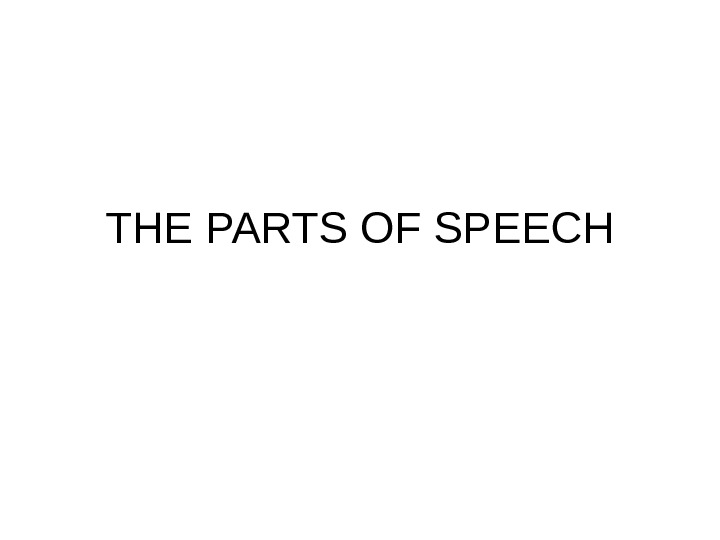

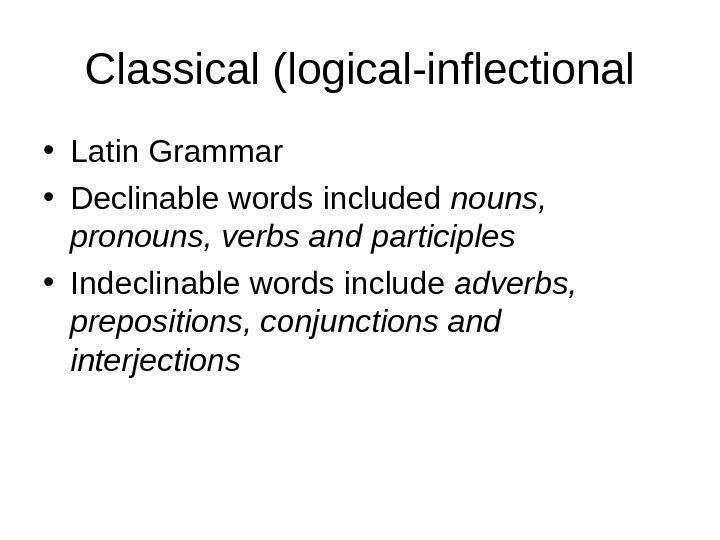
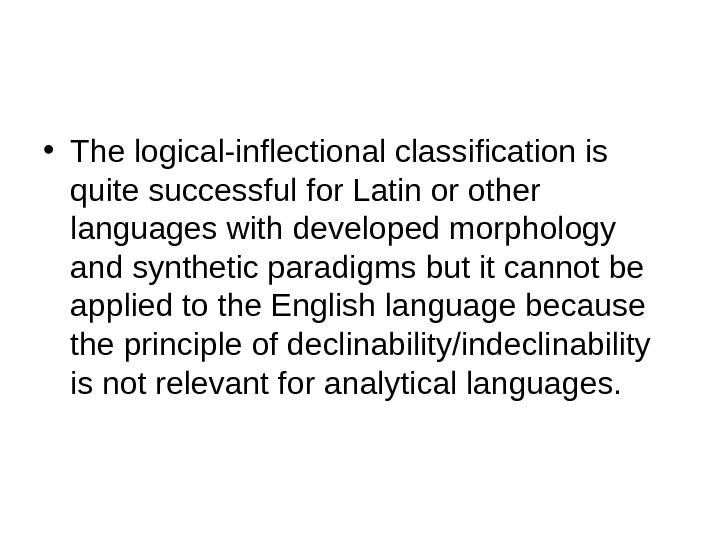
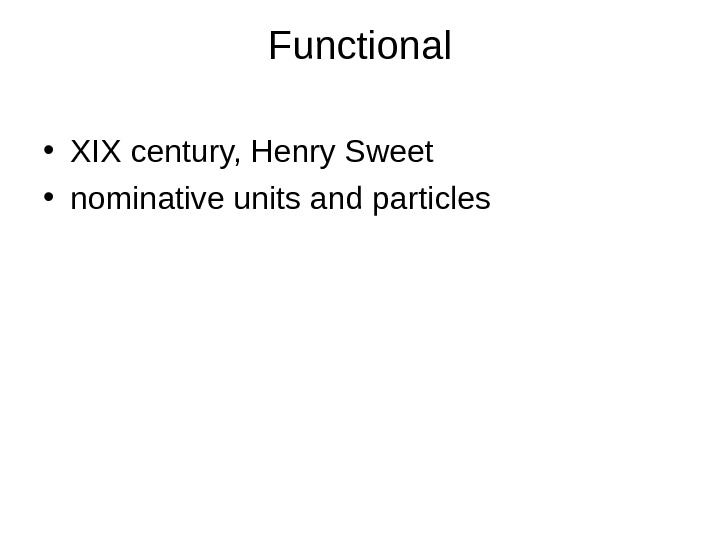
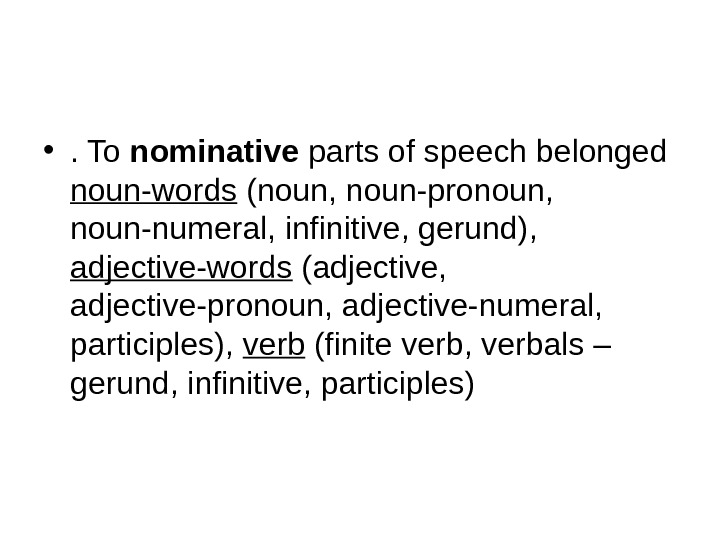
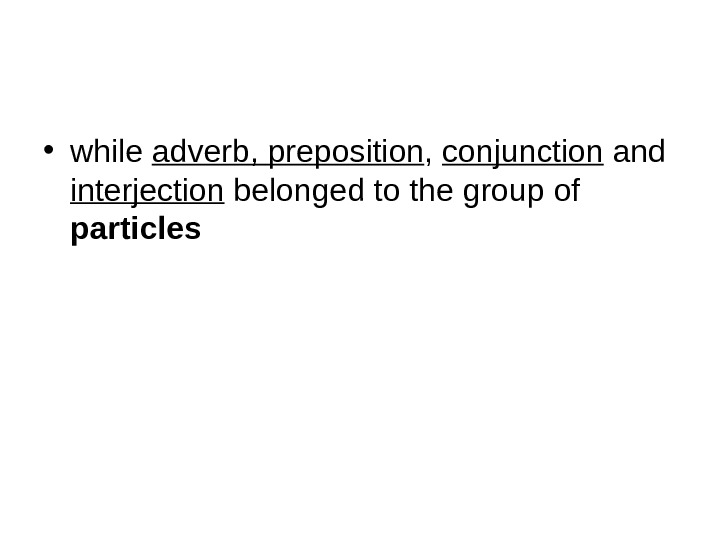
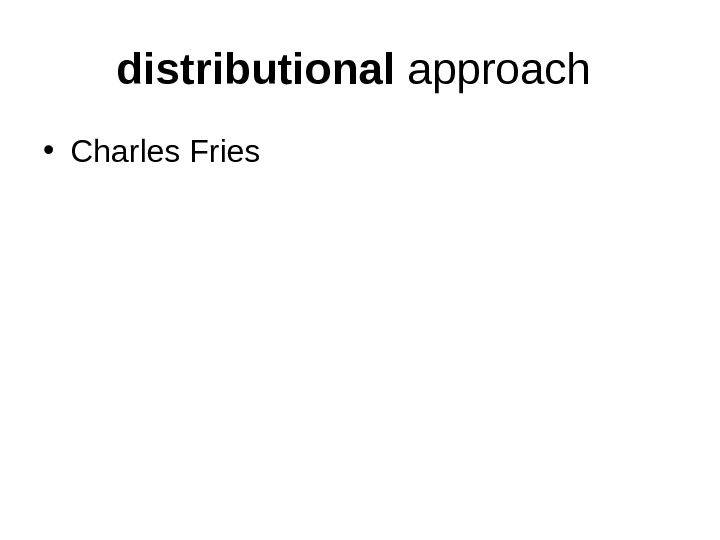
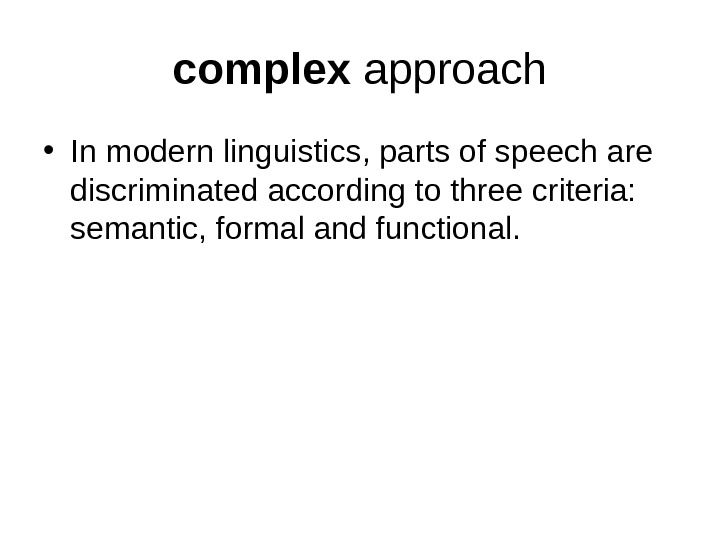
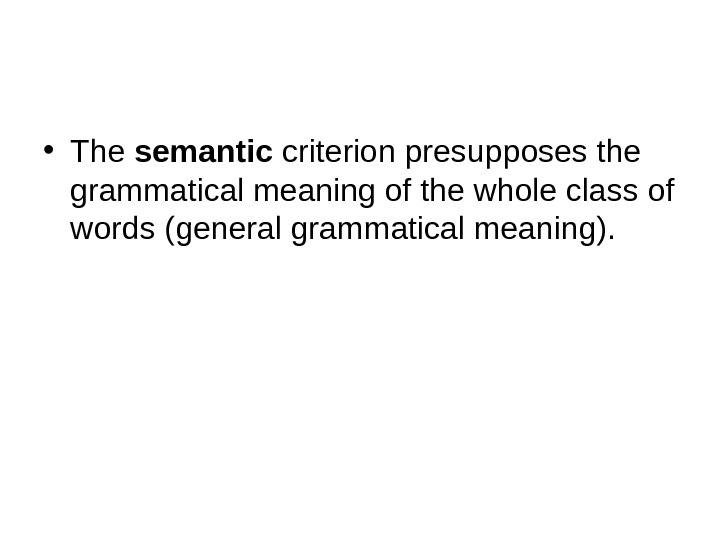
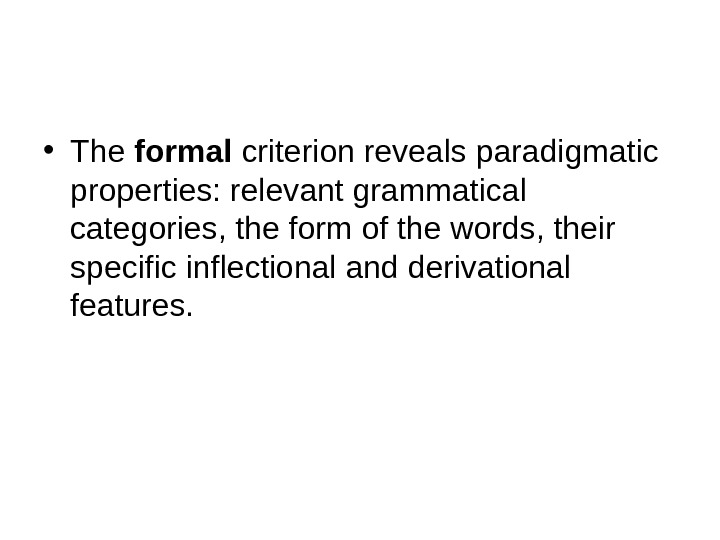
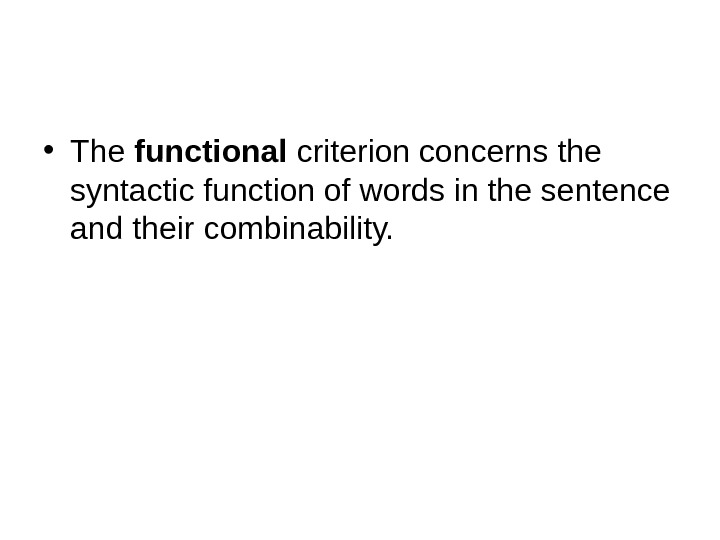
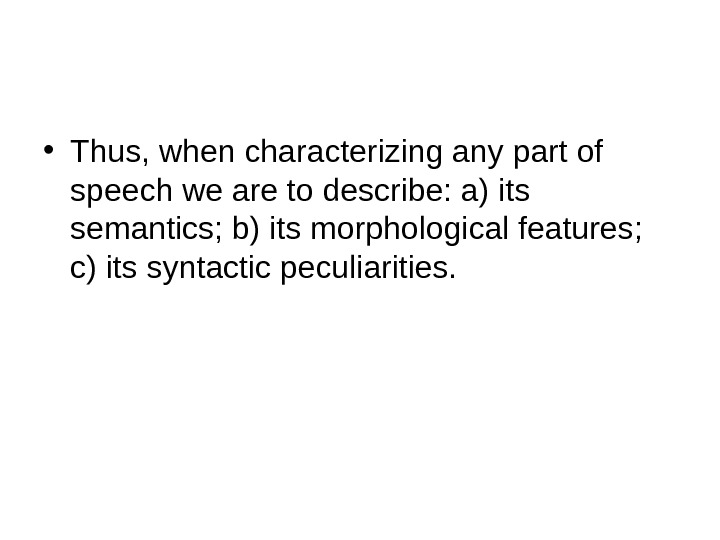
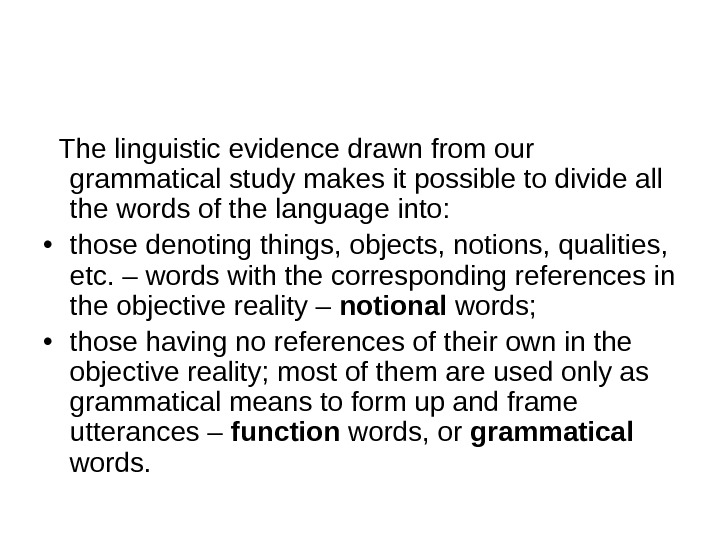
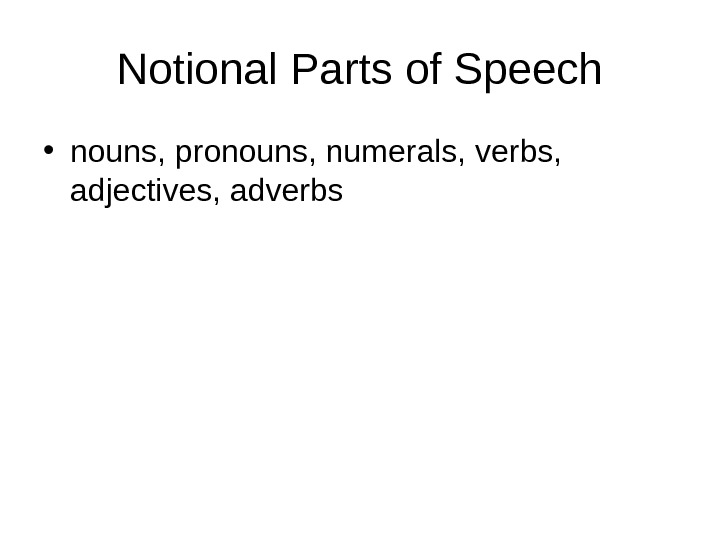
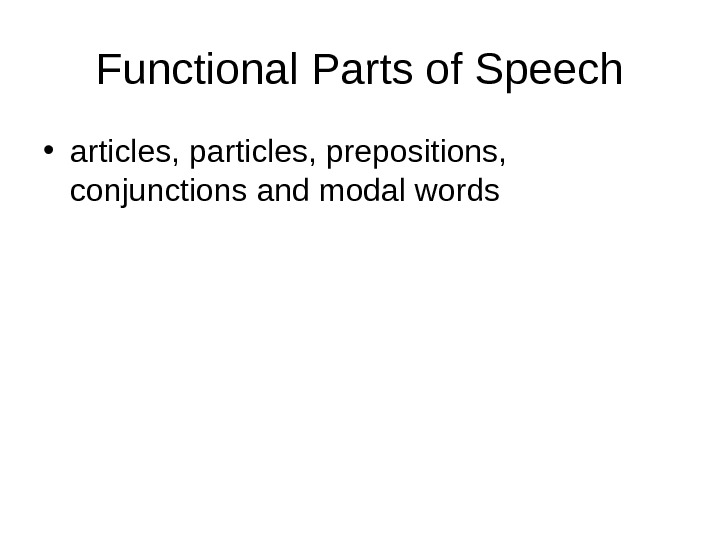
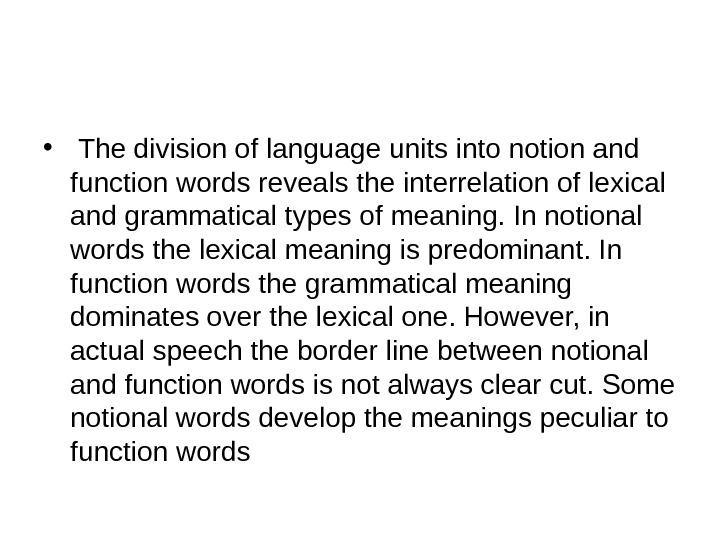
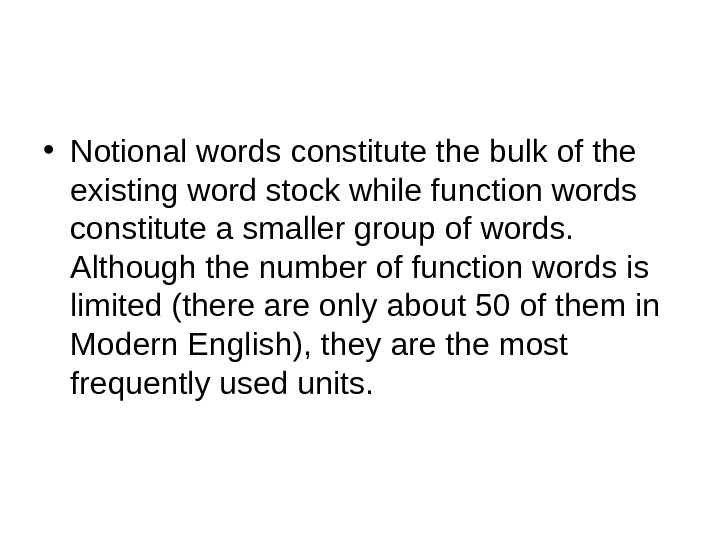
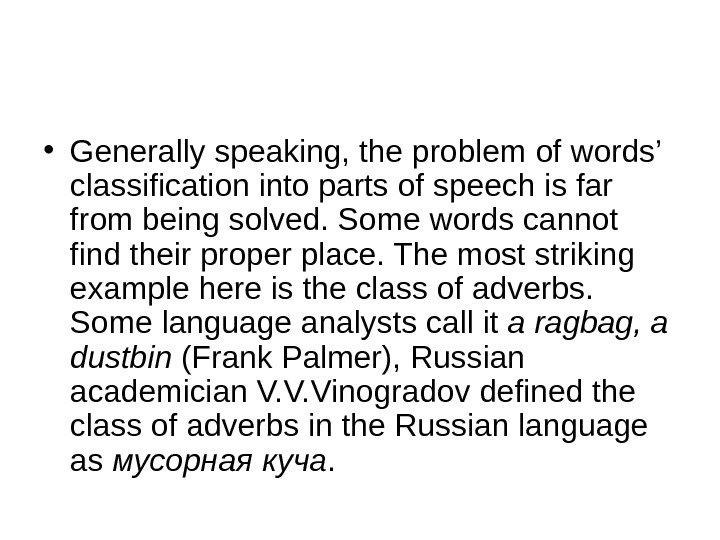
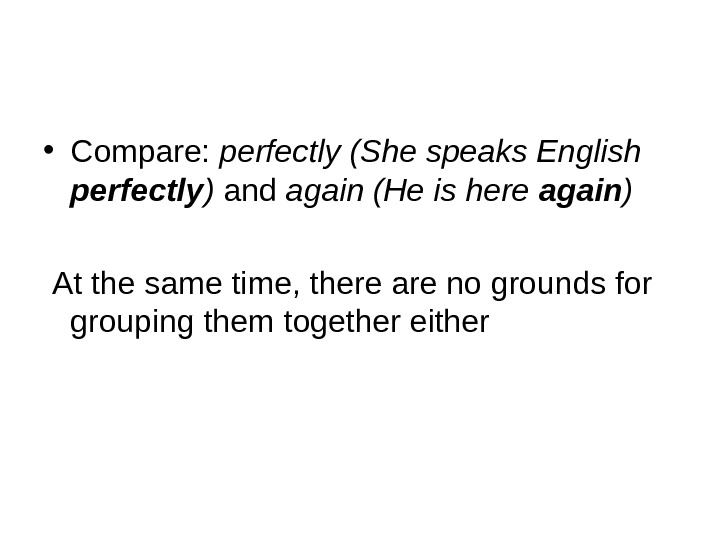
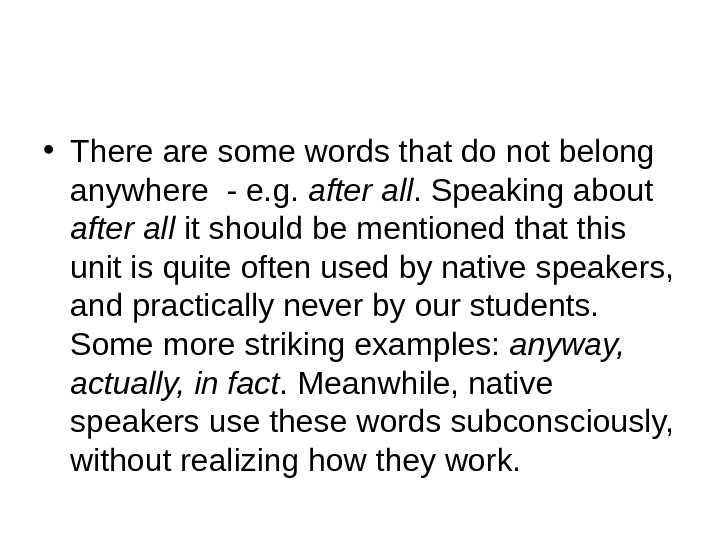

- Размер: 37.5 Кб
- Количество слайдов: 22
Описание презентации THE PARTS OF SPEECH Four Approaches по слайдам
 THE PARTS OF SPEECH
THE PARTS OF SPEECH
 Four Approaches • Classical (logical-inflectional) • Functional • Distributional • Complex
Four Approaches • Classical (logical-inflectional) • Functional • Distributional • Complex
 Classical (logical-inflectional • Latin Grammar • Declinable words included nouns, pronouns, verbs and participles • Indeclinable words include adverbs, prepositions, conjunctions and interjections
Classical (logical-inflectional • Latin Grammar • Declinable words included nouns, pronouns, verbs and participles • Indeclinable words include adverbs, prepositions, conjunctions and interjections
 • The logical-inflectional classification is quite successful for Latin or other languages with developed morphology and synthetic paradigms but it cannot be applied to the English language because the principle of declinability/indeclinability is not relevant for analytical languages.
• The logical-inflectional classification is quite successful for Latin or other languages with developed morphology and synthetic paradigms but it cannot be applied to the English language because the principle of declinability/indeclinability is not relevant for analytical languages.
 Functional • XIX century, Henry Sweet • nominative units and particles
Functional • XIX century, Henry Sweet • nominative units and particles
 • . To nominative parts of speech belonged noun-words (noun, noun-pronoun, noun-numeral, infinitive, gerund), adjective-words (adjective, adjective-pronoun, adjective-numeral, participles), verb (finite verb, verbals – gerund, infinitive, participles)
• . To nominative parts of speech belonged noun-words (noun, noun-pronoun, noun-numeral, infinitive, gerund), adjective-words (adjective, adjective-pronoun, adjective-numeral, participles), verb (finite verb, verbals – gerund, infinitive, participles)
 • while adverb, preposition , conjunction and interjection belonged to the group of particles
• while adverb, preposition , conjunction and interjection belonged to the group of particles
 distributional approach • Charles Fries
distributional approach • Charles Fries
 complex approach • In modern linguistics, parts of speech are discriminated according to three criteria: semantic, formal and functional.
complex approach • In modern linguistics, parts of speech are discriminated according to three criteria: semantic, formal and functional.
 • The semantic criterion presupposes the grammatical meaning of the whole class of words (general grammatical meaning).
• The semantic criterion presupposes the grammatical meaning of the whole class of words (general grammatical meaning).
 • The formal criterion reveals paradigmatic properties: relevant grammatical categories, the form of the words, their specific inflectional and derivational features.
• The formal criterion reveals paradigmatic properties: relevant grammatical categories, the form of the words, their specific inflectional and derivational features.
 • The functional criterion concerns the syntactic function of words in the sentence and their combinability.
• The functional criterion concerns the syntactic function of words in the sentence and their combinability.
 • Thus, when characterizing any part of speech we are to describe: a) its semantics; b) its morphological features; c) its syntactic peculiarities.
• Thus, when characterizing any part of speech we are to describe: a) its semantics; b) its morphological features; c) its syntactic peculiarities.
 The linguistic evidence drawn from our grammatical study makes it possible to divide all the words of the language into: • those denoting things, objects, notions, qualities, etc. – words with the corresponding references in the objective reality – notional words; • those having no references of their own in the objective reality; most of them are used only as grammatical means to form up and frame utterances – function words, or grammatical words.
The linguistic evidence drawn from our grammatical study makes it possible to divide all the words of the language into: • those denoting things, objects, notions, qualities, etc. – words with the corresponding references in the objective reality – notional words; • those having no references of their own in the objective reality; most of them are used only as grammatical means to form up and frame utterances – function words, or grammatical words.
 Notional Parts of Speech • nouns, pronouns, numerals, verbs, adjectives, adverbs
Notional Parts of Speech • nouns, pronouns, numerals, verbs, adjectives, adverbs
 Functional Parts of Speech • articles, prepositions, conjunctions and modal words
Functional Parts of Speech • articles, prepositions, conjunctions and modal words
 • The division of language units into notion and function words reveals the interrelation of lexical and grammatical types of meaning. In notional words the lexical meaning is predominant. In function words the grammatical meaning dominates over the lexical one. However, in actual speech the border line between notional and function words is not always clear cut. Some notional words develop the meanings peculiar to function words
• The division of language units into notion and function words reveals the interrelation of lexical and grammatical types of meaning. In notional words the lexical meaning is predominant. In function words the grammatical meaning dominates over the lexical one. However, in actual speech the border line between notional and function words is not always clear cut. Some notional words develop the meanings peculiar to function words
 • Notional words constitute the bulk of the existing word stock while function words constitute a smaller group of words. Although the number of function words is limited (there are only about 50 of them in Modern English), they are the most frequently used units.
• Notional words constitute the bulk of the existing word stock while function words constitute a smaller group of words. Although the number of function words is limited (there are only about 50 of them in Modern English), they are the most frequently used units.
 • Generally speaking, the problem of words’ classification into parts of speech is far from being solved. Some words cannot find their proper place. The most striking example here is the class of adverbs. Some language analysts call it a ragbag, a dustbin (Frank Palmer), Russian academician V. V. Vinogradov defined the class of adverbs in the Russian language as мусорная куча.
• Generally speaking, the problem of words’ classification into parts of speech is far from being solved. Some words cannot find their proper place. The most striking example here is the class of adverbs. Some language analysts call it a ragbag, a dustbin (Frank Palmer), Russian academician V. V. Vinogradov defined the class of adverbs in the Russian language as мусорная куча.
 • Compare: perfectly (She speaks English perfectly ) and again (He is here again ) At the same time, there are no grounds for grouping them together either
• Compare: perfectly (She speaks English perfectly ) and again (He is here again ) At the same time, there are no grounds for grouping them together either
 • There are some words that do not belong anywhere — e. g. after all. Speaking about after all it should be mentioned that this unit is quite often used by native speakers, and practically never by our students. Some more striking examples: anyway, actually, in fact. Meanwhile, native speakers use these words subconsciously, without realizing how they work.
• There are some words that do not belong anywhere — e. g. after all. Speaking about after all it should be mentioned that this unit is quite often used by native speakers, and practically never by our students. Some more striking examples: anyway, actually, in fact. Meanwhile, native speakers use these words subconsciously, without realizing how they work.

